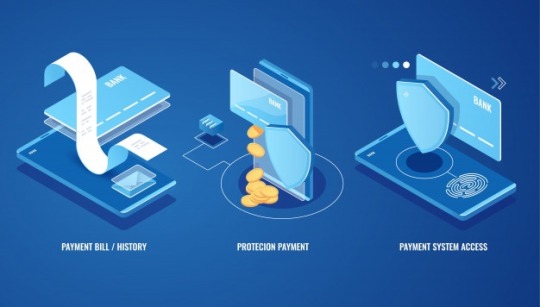Creating Online Payment Platforms
When it comes to online payment gateway platforms, today's eCommerce merchants have a plethora of options. As a result, in this article, we'll look at solutions for accepting payments online and talk about what a payment gateway is. How does it function? How should you select a payment gateway for your website?

Key Features of Online Payments
Before delving into the definition of payment gateways, it is necessary to identify the key players in online payments. When a customer clicks the "Pay" button on your website, the following individuals are involved in the payment process:
Merchant: This is you, an online business providing products or services to customers in any vertical field (travel, retail, e-commerce, games, foreign exchange, etc.).
Customers: Customers, also known as cardholders, want to buy products or services from merchants and make purchases.
Card issuing bank: The customer bank that issues the cardholder's credit or debit card on behalf of the card plan is known as the issuing bank (Visa, Mastercard).
Acquiring bank: An acquiring bank, also known as a merchant bank, is a financial institution that manages a merchant's bank account (called a merchant account). To receive payment, the acquiring bank forwards the merchant's transaction to the issuing bank.
What is Payment Gateway?
Payment gateway: A set of server equipment operated by the bank to convert data transmitted on the Internet into internal data of the financial institution or a third party designated to process merchant payment information and customer payments instructions.
An online payment gateway is required for any business that collects online payments or accepts credit/debit card payments.
It is critical to conduct research and find the best payment gateway provider for your specific requirements.
Payment gateways should provide numerous benefits, including fast payment settlement, barrier-free transaction processes, and an excellent overall experience each and every time.
So, what else should be considered in the payment gateway?
Security: The primary requirement of any online payment collection company is secure transactions. Customers must have faith in transactions, and their personal and financial information is secure when they transact online. It should ensure the security of the customer's information. Such services must adhere to PCI standards.
Customer experience: Payment gateways should offer one-of-a-kind, quick payment processing, and payment customization. It should be mobile-optimized, secure, and convenient, allowing customers to have a seamless shopping experience.
Global payment acceptance: We live and work on a global scale. Multi-currency transactions should be supported by the best online payment gateway.
Merchants settled: Because online transactions are the most popular in today's world, payment gateways should provide the quickest merchant settlement. Fees and rates for processing and setting should be in line with the merchant's budget.
Payment options: Last but not least, payment gateways should offer a variety of payment options. The customer should be able to select the payment method with which he or she is most familiar, which could be credit/debit card, online banking, mobile wallet, UPI, or any other method.
How does Payment Gateway work?
The payment gateway mainly goes through the following steps from entering the card information to the final inflow of the payment into the merchant account and settlement:
Step 1: After placing an order and paying online, the customer must enter his or her credit/debit card information.
Step 2: Encrypt the card details for transmission between the browser and the merchant's web server using Secure Sockets Layer (SSL) encryption.
The payment gateway fulfils the merchant's Payment Card Industry Data Security Standard (PCI DSS) compliance requirements without requiring customers to leave the website.
Step 3: The merchant then sends the transaction details to their payment gateway, which also has an SSL encrypted connection to the payment server hosted by the payment gateway.
Step 4: The payment processor sends the transaction details to the card schemes (Visa/MasterCard/American Express).
Step 5: After receiving the authorization request, the credit card issuer verifies the available credit or debit card and sends the response back to the processor (via the same process as authorization) along with the response code (that is, approval or rejection). The response code also aids in communicating the reason for the transaction failure, such as insufficient funds.
Step 6: The processor then sends the authorization response to the online payment gateway India, which receives it and sends it to the interface for payment processing. This is known as authorization or "authentication."
Step 7: Once the merchant has completed the order, the preceding steps can be repeated, but this time the authorization is "cleared" by completing the transaction.
Normally, the "cleanup" is not started until the merchant has completed the transaction (ie, the order is shipped).
As a result, the issuing bank "clears" the "auth" (that is, transfers the auth-hold to the debit) and is ready to settle with the merchant's acquiring bank.
Step 8: The merchant submits all approved authorizations to the acquiring bank in "batch" (end of day) form for settlement through its processor.
If it has not been clearly "cleared," the corresponding "identity verification" will usually be reduced or "cleared."
Step 9: The acquiring bank sends the issuing bank a batch settlement request.
Step 10: The credit card issuing bank pays the acquiring bank a settlement payment (in most cases the next day).
Step 11: The acquiring bank then deposits all funds that have been approved into the merchant's designated account.
Post Your Ad Here
Comments